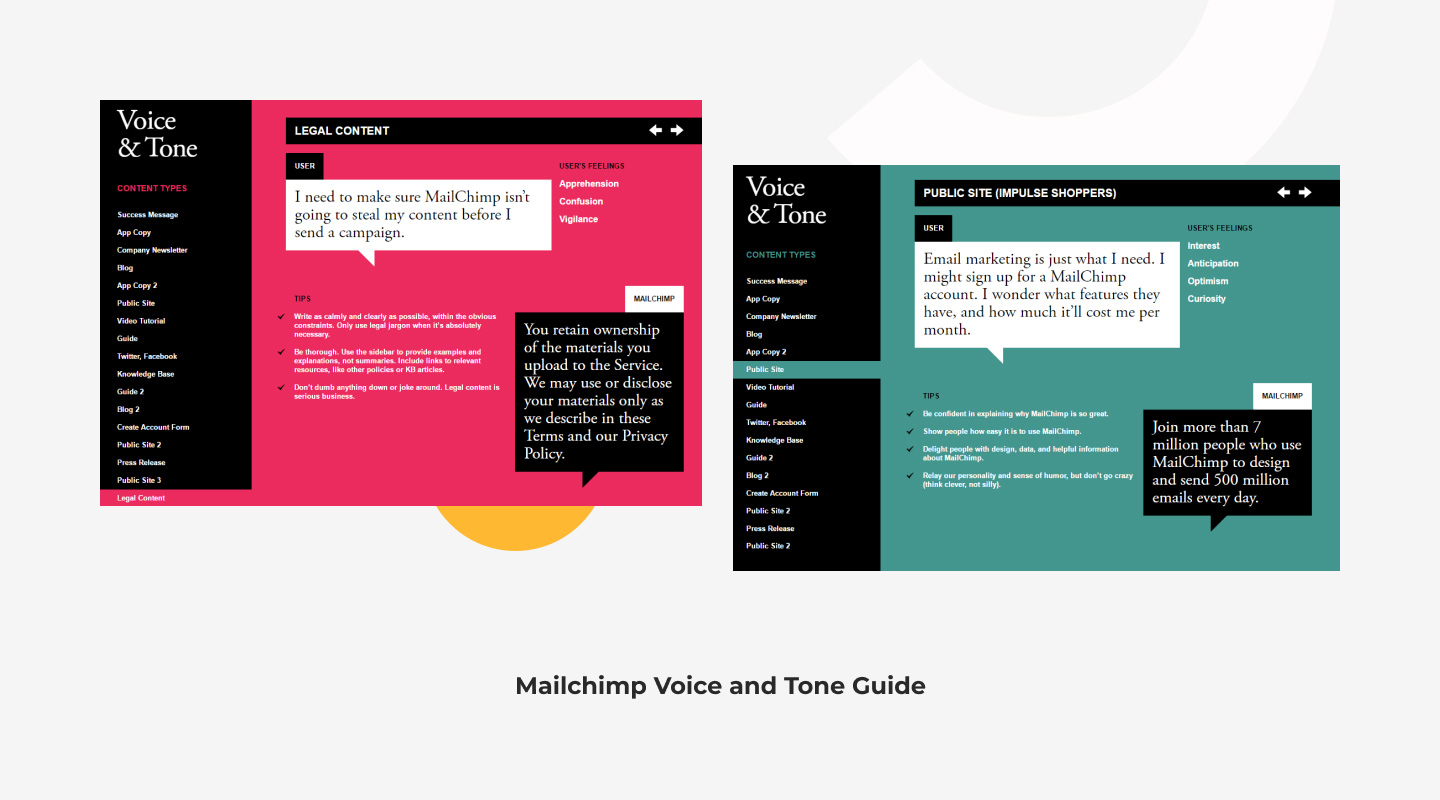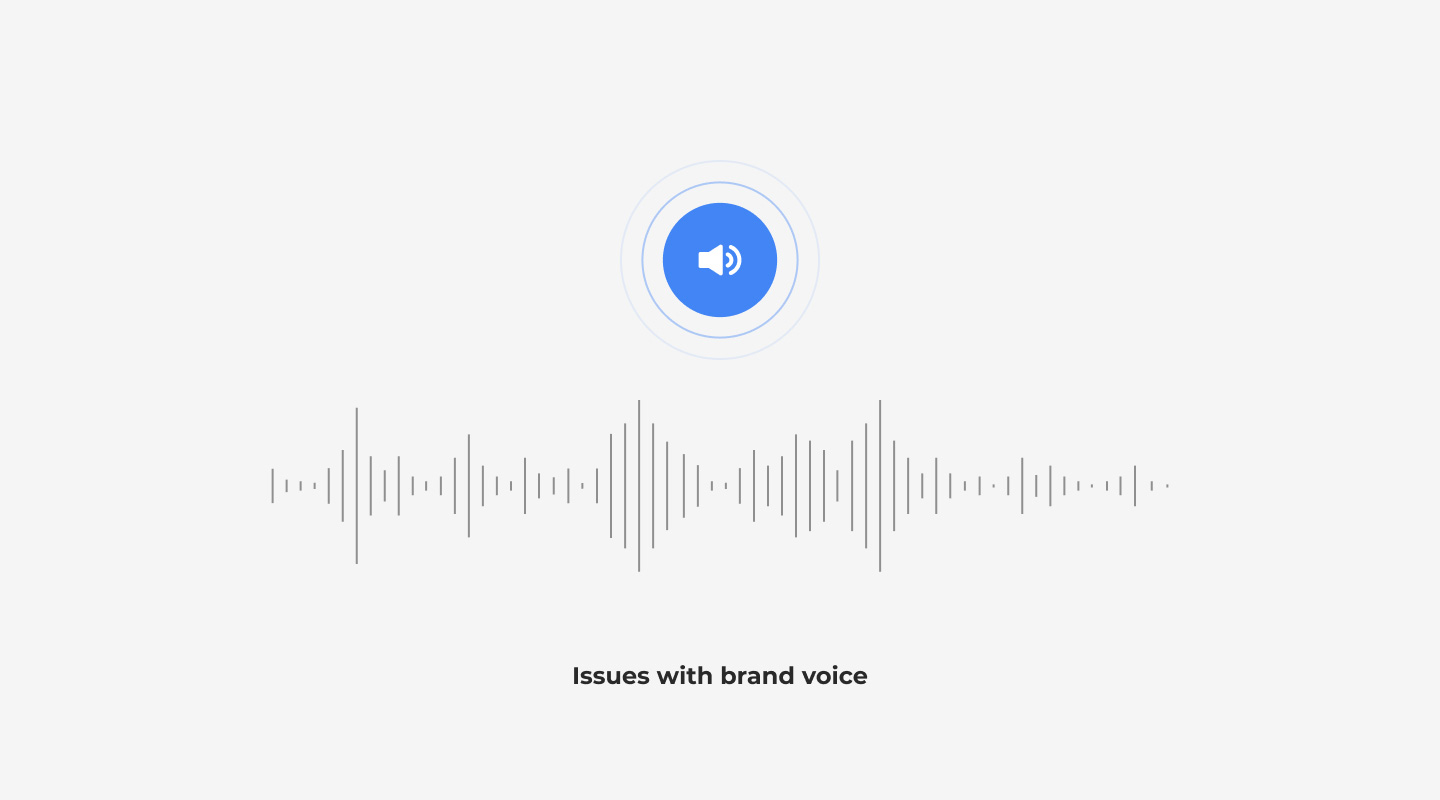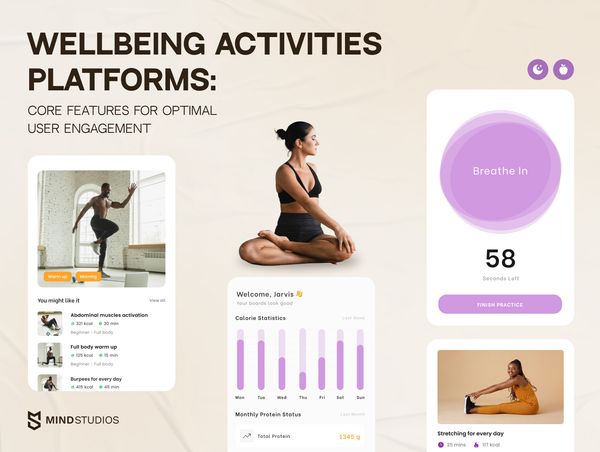
In this article, we’d like to tell you a little bit about the importance of UX writing in user experience design and how copy done well can make your product more appealing to your audience.
Software development is an extremely multifaceted industry. When you decide to build a website or a mobile app, you have so many things to think about that the words you use for buttons are often an afterthought. Many a website owner underestimates the power of quality text.
At the same time, some specialists claim that good UX copy can raise user engagement as much as 17% with a single button. This is how important UX writing is for your app's success. And that’s why you need a UX writer on board from day one of sketching a navigation concept.
Contents:
- UX writing vs UX design
- What is a UX writer?
- Tasks and responsibilities of a UX writer
- Common UX writing mistakes
- UX writer vs copywriter
- So what should I do about a UX writer?
UX writing vs UX design
Pitching UX writing against UX design isn’t something you should do. It’s not that UX writing is different from UX design; UX writing is part of UX design. Many people in need of software development services assume this means that a UI/UX designer is the one who must create not only the navigation concept and eye-pleasing visuals but also write all the accompanying text. This seems to be one of the reasons why very few small and mid-sized development companies have a separate position of UX writer — because their UX designers perform this function.
At the same time, if you look at large corporations like Google, Microsoft, and Amazon, you’ll see that they’re all looking for experienced UX writers. Google alone has a separate team of UX writers for each product. This makes UX writing and UX design look like very confusing things. So what do these people do?
What is a UX writer?
UX writers can have different job titles, which is part of the problem when you start looking for one. Some companies call them UX writers, while others go with content designers, and still others are looking for product writers or even content strategists. This causes confusion among companies and applicants alike. But the core of the job is generally the same: writing copy for interfaces.
A huge part of any website’s or app’s success lies in an intuitive interface, which makes for a great user experience. However good your features are, if your app is cluttered and navigating it is a hassle, your users will leave in no time.
And part of what makes an app intuitive is the words:
- Competent calls to action
- Easily spottable action buttons
- Immediately understandable instructions
That’s what you hire a UX writer for.
Tasks and responsibilities of a UX writer

With the oversaturated digital market these days, you often have one chance to grab a user’s attention and make them fall for your product. Your onboarding message can make it or break it.
Your UX writer is the Alexa of your product, only in words instead of speech.
On second thought, scratch that — not only in writing. The words you hear when you use Alexa, Siri, Cortana, or any other voice assistant are also written by a user experience writer. Any words that help a product communicate with a user — whether in written or spoken form — are the result of a UX writer’s sweat and tears. This includes but is not limited to:
- Navigation tips
- Pop-up help messages
- Form-filling instructions and hints
- Error and success messages
- Button texts
- Placeholders
- Service screen messages
- Loading screen messages
- Titles and taglines
- Call-to-action messages
The user experience consists of tiny messages like these in addition to the product’s logic, visuals, and audio/sounds. The job of a UX content writer is to make these messages:
- Simple, but not too simple
- Short, but not too short
- Friendly, but to a degree fitting for the product
- Personal, but not overstepping boundaries
- Unique to your brand’s tone and voice
As you can see, UX writing is no cakewalk.
For a user experience to be a success, a UX writer needs to create a style guide for each product they work with. A style guide is a set of guidelines to make product–user communication consistent and distinctive in the sea of digital products. A style guide is used not only for interface texts but for newsletters, marketing campaigns, and social media communications.

If you’d like to see quality examples of UX writing, the industry-renowned place to look for them is the Mailchimp Voice and Tone Guide.
Common UX writing mistakes
The task of filling an interface with text is fairly simple, enough so that anyone — a designer, a developer, or an app owner — can handle it. Or so it seems. However, the internet is full of examples of bad UX writing. We’d like to give some attention to the biggest and most widespread kinds of UX writing mistakes.
1. Issues with brand voice

Just as each person has a unique voice, each company has what in UX writing is called a brand voice. The brand voice is the specific way your brand communicates with its customers. It includes the tone of your messages and the choice of words you use on your website and in your app. Brand voice combined with interface visuals determine how your clients remember the interactions they have with your product.
The big problem some companies have is that their products:
- have no voice whatsoever
- have an inconsistent voice
- have the wrong voice.
Let’s look at examples of each type of mistake.
No brand voice
You’ve probably seen websites with generic content and a “robotic” voice. They contain messages with no personality and no empathy towards the user:
- “Account frozen”
- “Card declined”
- “Registration complete”
These kinds of texts are especially aggravating for users in error messages, where empathy is expected. Non-personalized communication makes users’ interactions with your product bland, boring, and unremarkable.
This issue most frequently occurs for two reasons:
- Some product owners and designers believe that less text means users will engage with the product with less delay.
Too much text can indeed harm engagement rates. However, it’s also true that limiting the space for text too much can strip it of its personality. It’s a fine line to walk.
- The text wasn’t written by a writer.

In many cases, communication messages, buttons, and CTAs are written by designers or developers — specialists for whom writing such messages is hardly their highest priority. And unless you have a designer or developer who’s a walking thesaurus, having a writer work on your product’s messages will probably be beneficial. This way, you’ll not only improve product–user communication but will lessen the load on your designers and developers.
| Compare these messages: | |
|---|---|
| An authentication failure has occurred. | Oops! That password and email don’t match. Check for typos and try again. |
| Failed to initialize booking engine. Bad request. | Sorry! We can’t find any tickets for your date. Shall we look at tickets for the next day? |
| The operation couldn’t be completed. WDGeneralNetworkError error 500. | Looks like network connection is lost :( Try refreshing the page. |
Inconsistent voice
Your product isn’t the only place where you’re communicating with users. Most companies also hold marketing campaigns, send out newsletters, and have a social media presence. You should use the same tone and voice when you communicate with users across platforms and mediums.
An inconsistent voice can result in losing users. Here’s how it works.
When interacting with a product, service, or company, a user creates a certain image of it based on their initial communications.
For example, say a user chose your app among dozens of options in an app store because they saw your ad on Facebook. Then they open your app and see a completely different style and tone of voice from what they saw in the ad. Chances are, the user will be confused and disappointed, and these feelings will tint each interaction. In the end, the user may stop using the app altogether — because it’s not what they expected.
You can achieve a consistent voice by having a UX writer create a style guide for your brand. A style guide is used in all brand–user interactions — for UX messages, marketing emails, ads, social media posts, etc.
Using the wrong voice
Brand voice is a tricky thing, and to get it right, design teams conduct thorough research. You wouldn’t want your insurance company’s website to sound like an overeager teenager, would you?
The voice and tone of a brand should depend on the types of products or services it provides and its target audience.
2. Complexity and jargon

Writing text for interfaces brings many challenges. The biggest one is that you’re often limited in the space available. Making your website beautiful and filled with images and blank space is a great trend, but it leaves little to no place to properly explain things (as we do in articles, for example). Furthermore, it’s not easy to fit a personality into a one-word button.
To combat this issue, some websites offer abbreviations and jargon. Back in the day, Windows had a lot of jargon like this in error messages:
‘TSC’ is undefined
Critical error #2348FA300032:30
Unhandled exception at 0x5716646c in Template.exe
These messages made users mad. And also scared. But mostly mad. What the hell went wrong, exactly? How am I to understand this? What should I do?
Nowadays, the situation isn’t as dire, but sometimes you can still catch a very specific term or abbreviation on a website and you need to search for its meaning somewhere deeper on the site or even on Google:
IIF instead of Institute of International Finance
SEOM instead of Search Engine Optimization and Marketing
A different case is using shorthand abbreviations as a way to seem closer to a younger audience:
- AFAIK = As Far As I Know
- FTFY = Fixed That For You
- ICYMI = In Case You Missed It
- TBT = Throwback Thursday
While these abbreviations are indeed used by people — mostly in instant messages or on Twitter due to character limits — they’re hardly appropriate for, say, an official message board at a hospital.
Another reason some websites use jargon is to appear more “professional.” Usually, this results in confusing clients who aren’t industry insiders. Look at this example from a website offering psychic services:
"All of our readers are very gifted and highly intuitive; some purely in clairvoyance, while others are clairaudient and clairsentient."
Now, words like clairaudient and clairsentient aren’t complete gibberish, you might say. Indeed, they aren’t — the word clairvoyant is heard quite a bit, and you can parse the other two to guess at the meaning. However, it might take a minute or two to puzzle out the idea if you’re just dipping your toes into all this mysticism. That, and readers might think themselves not that bright for a moment.

Why not use simpler words?
We have exceptionally gifted and highly intuitive readers. Some communicate using clairvoyance, while others can sense invisible energies or hear the voices of those long gone.
We often hear that you shouldn’t think your users are idiots who need every little thing explained. And that’s true. But using jargon isn’t a good way around it in most cases. Yes, when your website or app deals with a specific industry, it’s tempting to fill it with terminology used exclusively inside that industry. And offer no explanation — because your users are smart and they know the industry, right? Well, the latter is debatable.
Sometimes, your website will be used by newbies in the industry, or foreigners, or regular people looking up services you provide. Sometimes a seasoned professional won’t know the jargon you use because no textbooks or manuals mention it. Word of mouth is unreliable at best. This is why UX writing is important. Based on a UX writer’s research, your design team should know which terms need to be explained.
3. Bad editing
You’d be surprised how many websites have noticeable typos. It doesn’t mean that the designers or developers or whoever else wrote the texts are dumb. It’s pretty natural for people without extensive writing and editing experience to not notice a typo or a misplaced comma.
But for a user, typos look like you haven’t paid enough attention to developing your content. Like maybe you think no one will notice anyway so you can skip the editing. Like you don’t care much. And that’s not the image you want to have for your business to thrive.
Why hire a UX writer? To make time for UX designers and developers to design and develop. They should focus on their core duties and leave the writing to writers.
UX writer vs copywriter
Some software development companies that have no separate UX writer position employ a copywriter to help designers with interface texts. Usually, this is done at the later stages of development and mostly includes proofreading rather than the full scope of what a UX writer does.
What’s the difference between copywriting and UX writing, and can a copywriter be a good UX writer?
The short answer is yes, a copywriter can do UX writing well — after learning how. But so can a UX designer. Or a developer. Or anyone coming from a completely different profession.
Granted, for a copywriter or a journalist — especially one who’s already working in IT — the learning curve will be shallower.
Contrast in tasks between UX writer and copywriter
Length of copy
The biggest difference between a copywriter working on blog articles and a UX writer is, of course, in the length of the copy they write. The average article can span anywhere from one thousand words to infinity. This allows us writers to go all out: explain everything meticulously, with rich use of metaphors and plenty of examples.
UX texts are called microcopy for a reason. In the UX, the writer has space for a couple of lines at best, a single two-syllable word at worst. In that space, they need to write copy that’s instantly understandable and clear for every potential user regardless of whether they’re an industry insider or just passing by.
Department
A traditional copywriter is a member of the marketing department. They — we — write to attract attention, bring new clients, and sell our company’s services, in a way. We also write to tell a story, to educate, to share our research results, and to spread knowledge. But ultimately, we do marketing.
A UX writer belongs with the UX design team. They write to make the interactions between a product and a user fruitful and enjoyable. The work of a UX writer is to converse with a user through the website or app interface. A UX writer doesn’t — or at least shouldn’t — think about selling the product. They should think about how to make the user stay with the product.
Team playing
The work of a marketing copywriter can be a solitary affair, given the skills. You can do research, writing, search engine optimization, publishing, social media management, and post-publication monitoring. That’s how bloggers operate. Granted, most companies nowadays have separate people managing SEO, social media, and articles. But researching and writing an article is something you can do alone.
The situation is different for UX writers. A proper UX writer is a fully functional member of the design and development team. They take part in the design process from step one. It’s their job to create a style guide for the product if one isn’t provided by the client. It’s also part of a UX writer’s responsibilities to discuss with UX designers the length of every text field. UX writers do research so they can speak efficiently with users. Often, to find the right words, they conduct A/B tests on microcopy.
Involvement stage
Finally, a marketing campaign can take place at any convenient time, meaning a marketing copywriter can be hired whenever you wish to boost your product’s online presence.
UX writing, on the other hand, is part of the design process, and unless you want to ruin your design flow, you’ll need to hire a UX writer at the very beginning of development.
Let’s look at all these differences between UX design and UX writing in a chart.
| UX writer | Copywriter |
|---|---|
| Belongs to the UX design team | Belongs to the marketing team |
| Is heavily limited by character count so needs to be brief but easily understood | Isn’t limited by length so can use complex language and offer explanations |
| Writes to make the product easy to use | Writes to sell the product |
| Writes copy that converses with the user | Writes copy that tells a story to the user |
| Works closely in a team | Can work alone |
| Works with the product from day one | Can join the project at any time |
So what should I do about a UX writer?

We’ve created this article about the benefits of UX writing because we firmly believe that the profession of UX writer is going to flourish in the future and that UX writers will become a necessity in both app and website development.
If yours is a small or medium-sized app development company, chances are you don’t have a designated UX writer for one or both of these reasons:
- It’s a relatively new profession, its visibility is low, and finding a qualified specialist is hard
- You or your clients can’t afford another person on the project
Either of these reasons is valid, especially since you can have your designers and/or copywriters develop their skills and learn to create superb microcopy. This skill will come in handy for them (and your company) even when you do hire a designated UX writer.
The importance of copywriting in UX design will only grow from here onward. If you’re the owner of a software development company and you want to stay up to date, now is the time to start educating your employees and looking for talents in this new niche.
If you have any more questions, we can provide a consultation. Ask your question and we’ll get back to you ASAP.









